At first, it may just be an empty fish tank, then you add water to the tank, add fish, and then put a variety of plants inside, it seems that the fish tank is richer and more attractive. The underwater world you built up looks overflowing with charm …
Content Table
However, just keeping fish in a fish tank looks more or less monotonous, some new turtle lovers may consider adding turtles to the tank, but after all, turtles are carnivores and completely different species from fish, can turtles and fish be kept in a fish tank at the same time?
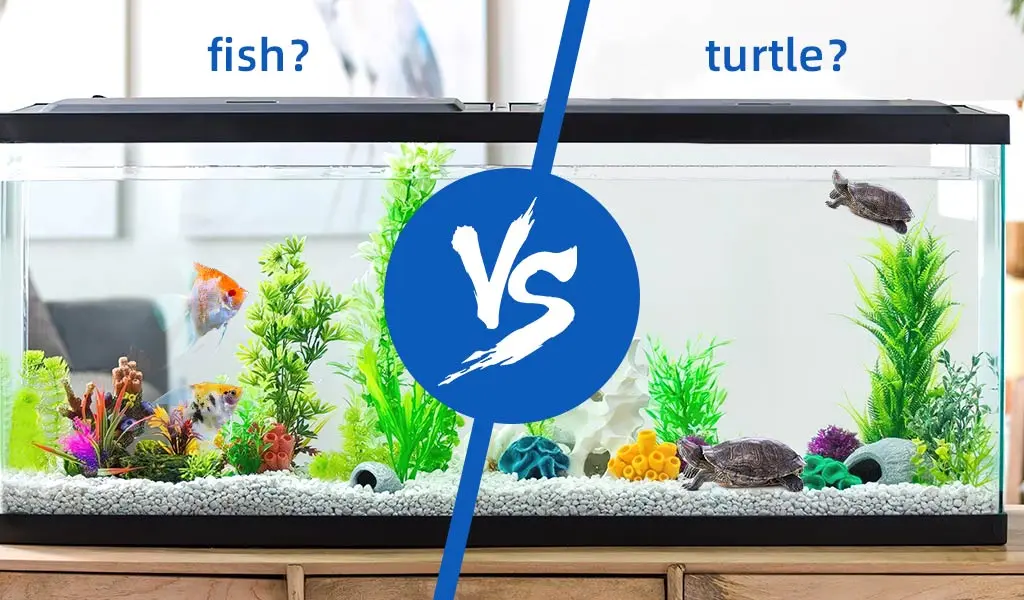
Should I Only Get Fish or a Turtle as a Pet in the Fish Tank?
You may be thinking, “Should I get a fish or a turtle for my fish tank?”Some people may think: why I can only choose one kind of animal to put in the fish tank? Can’t I keep fish and turtles in a tank at the same time? The choice is really up to you, but here are some things to consider. Frogs can be aggressive, and some species, like the red-eyed tree frog, don’t do well in fish tanks, but turtles are known to eat fish, though very few do.
If you want to keep a turtle as a pet, you should select a fish that is the same size as your turtle. Fish with short fins don’t do well with turtles. However, longer fins are more attractive to turtles. Turtles will often prefer a larger species of fish. You can consider getting ghost shrimp or apple snails if you have a fish tank and turtles.
There are many differences between turtles and fish. The former tends to be more active and always in motion. Turtles prefer quieter fish with fewer activity levels. Turtles also tend to seek out those with high intelligence levels. It may take a while before the fish and turtle acclimate to each other. However, if the turtle is willing to be in the tank, it’s likely to be a happy pet for years to come.
Some other considerations include their size and type. The most common are box turtles, red-eared sliders, painted turtles, Caspian pond turtles, and wood turtles. Turtles are long-lived animals with a lifespan of over 25 years. Their shells are typically six to twelve inches in diameter. Most turtles purchased at pet stores are juveniles, so choosing between these two is an important decision.
Choosing between a fish and a turtle as a pet is important because each requires different environmental conditions. A turtle’s tank temperature range is different than a fish’s, so a basking lamp will likely be incompatible with both species. While turtles are omnivorous, some species prefer fast-moving fish. They will often eat fish, so choose carefully. Turtles are territorial, so choosing a turtle and a fish that are compatible will depend on what kind you’d like.
Besides being more difficult to care for, both turtles and other creatures need large fish tanks. Experts recommend a fish tank size of ten gallons for every inch of turtle length. That means that a five-inch turtle will require a fish tank of 50 gallons or more. Both species of turtles need a larger fish tank as turtles produce more waste than fish do.
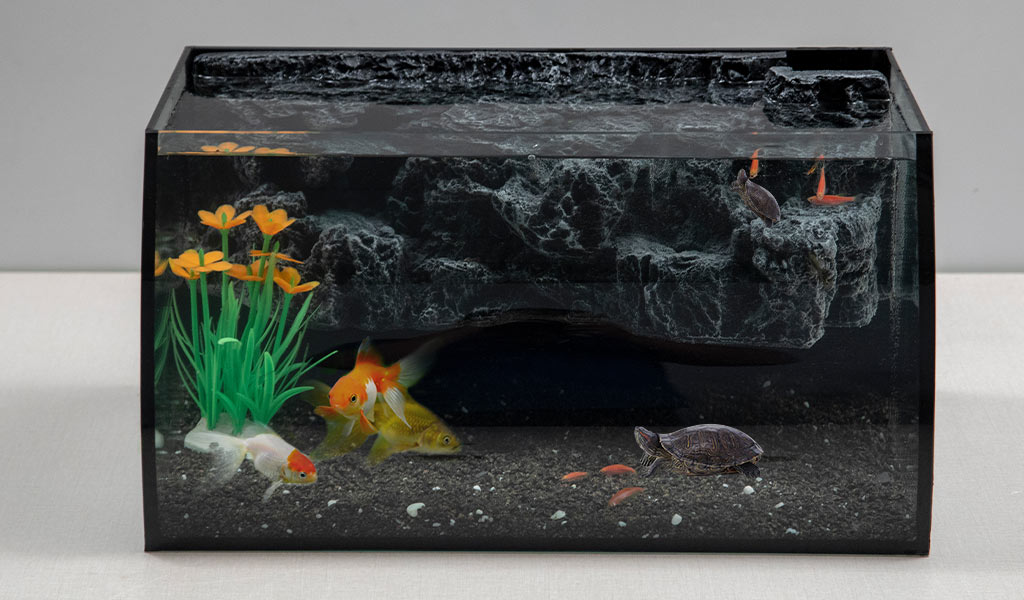
Can Turtles and Fish Live in the Same Aquarium?
Can turtles and fish live in the same aquarium? Yes and no. The answer depends on how much space they require. Small fish are the most vulnerable, and betta fish can live in tanks with hundreds of turtles. However, larger fish may be able to tolerate the presence of a few turtles. You should avoid adding too many fish to a tank. Turtles will produce a large amount of waste and they can overpopulate the tank.
Large fish can be beneficial to both species. The only disadvantage to keeping turtles and fish together is that they will compete for space. However, large goldfish are ideal if you want a peaceful, non-aggressive tank mate. Oscars are also good choices if you aren’t concerned about your turtle’s health. However, if you want your turtle to live peacefully with fish, make sure the species of fish are compatible.
When choosing an aquarium for a turtle and a fish, consider their size. A four-inch turtle will need a 40-gallon tank. A seven-inch turtle will need at least a 75-gallon tank. If you plan to keep two turtles in the same tank, be sure to buy a large enough tank to accommodate them. Remember that each inch of the turtle’s shell will require an additional ten gallons of water.
Introduce fish gradually to turtles
While fish may be more compatible with turtles, they’re still predators. Freshwater turtles are known to eat fish and might hunt for them. Fortunately, they’re easy to replace. And they don’t have sharp bones like fish. Plus, some fish contain thiamine, which blocks the absorption of vitamin B1, which is essential for turtles. To maintain a healthy balance between turtles and fish, you’ll need a large tank. A five-foot-long tank with 80 gallons of water is a good starting point.
The two species should be introduced gradually. You should feed the turtle before introducing it to the fish so that the turtle doesn’t eat it. Also, try to introduce the fish slowly, so that they’re used to the new environment and don’t start fighting. Monitoring the interactions between the fish and the turtle is also a good idea. If the fish show aggressive behavior, it’s best to remove them immediately.
If the fish and turtle are compatible, you can pair them. A positive interaction between the two species is perfectly fine. If they show signs of aggression, you should remove the fish from the tank and find another habitat for them. When it comes to feeding the turtle, you can offer a “feeder” fish.
However, it is not safe to put juvenile turtles in the same tank as fish. Juveniles are likely to attack a fish if they believe it is food. While mature turtles are tolerant of fish, they may attack a turtle if the latter has a diet of fish. If this happens, the turtle could even die of starvation. This is not a good situation for a beginner.
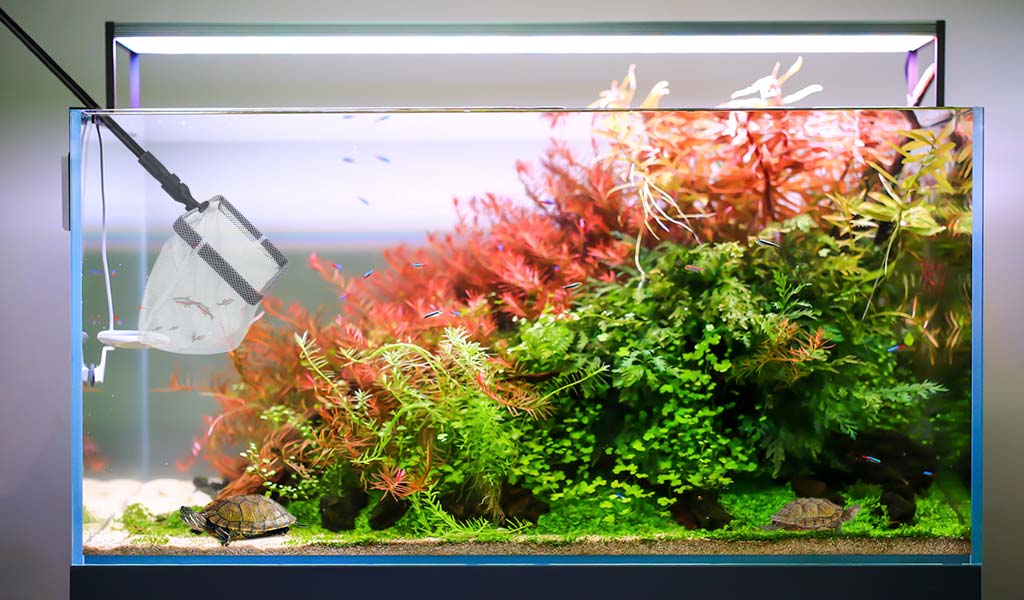
What Is a Good Fish to Put in a Turtle Tank?
A variety of species are suitable as tank mates for turtles. Choosing the correct species is important if you are to enjoy having healthy fish. There are several guidelines you should follow when choosing the right fish for a turtle tank. Keep in mind that smaller fish can injure your turtle’s tail and fins. If you are unsure of the size of your tank, you can try a medium-sized tetra fish, which is also very inexpensive.
Keep in mind that turtles can be aggressive, so it is important to find a fish that is not overly competitive. Generally speaking, turtles are solitary creatures, so a school of fish would stress them out. Turtles also require deep water, which should be at least twice their length. A six-inch painted turtle would need a depth of 12 inches. It also needs land to rest on.
It is also best not to place any cichlid fish in a turtle tank. These fish have strong claws and can inflict damage on your turtle. Avoid placing other crustaceans in the tank, since they may be prey to the turtle. Instead, try to choose small and slow-moving fish. This way, you will be able to observe the turtle’s behavior as you are caring for your new pet.
A yellow cichlid is an African species that can reach four inches. These fish are territorial and feisty, so keep a distance while adding them to your turtle tank. These fish are also territorial, and if they don’t know how to act around turtles, they will turn the tables on them. They also need lots of hiding spaces, which is one reason they may not suitable for turtle tanks.
When choosing a turtle tank, be sure to check the aquatic turtle’s diet before introducing fish. Adult turtles will eat less meat and vegetable-based foods, while juveniles will eat fish that are smaller in size. You will need to provide a basking area, a turtle filter that can bathe the turtle’s back, and UVB and LED clip on lights for them to get the most out of their new friends. And remember to feed them! Turtles are omnivorous, and you should provide food that will make their lives easier.
The best choice for an aquatic turtle is a species that is naturally attracted to the color and texture of its surroundings. Choosing fish that are compatible with turtles will ensure the longest possible life for your pet. Besides, you can also try other species if you want to experiment. It’s worth a try, and you will be glad you did. Then, the next time you have a new turtle in your tank, you can put in some fish.
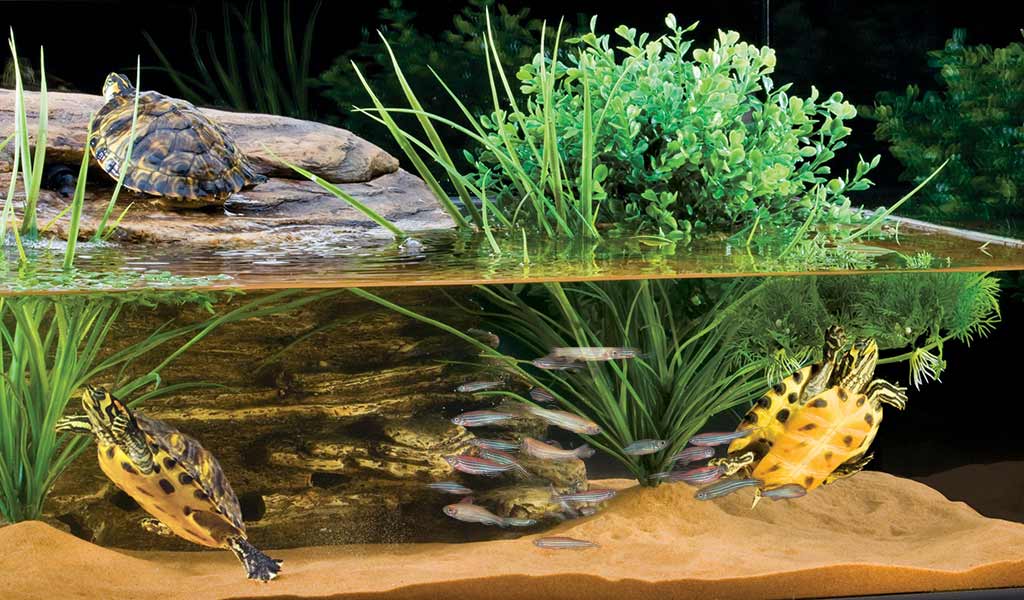
Tips for Keeping Turtles and Fish Together in a Fish Tank
If you’re planning to keep a pet aquatic turtle and fish in the same tank, it’s best to feed your turtle before introducing it to the tank. Not only will it tolerate the new fish better, but it won’t chase it. If the fish begin to chase the turtle, the best way to deal with is to remove them from the tank. The turtle can also bite the fish’s fins.
While you can keep a turtle and fish together in the same fish tank, it is not recommended. Turtles will chase and eat fish. Also, don’t mix your two animals in the same tank. You’ll risk them dying if one is aggressive toward the other.
It’s best to have one fish to keep away from the turtle but don’t let them fight. A turtle can be dangerous and can chase the fish for long periods if it’s not provided with enough food. To help prevent this problem, make sure to provide your turtle with a place to rest. And, remember that they need their food too. So, when you’re buying a new fish for your turtle, you’d better buy some – and make sure they’re not fragile ones.
Before you bring your new fish home, make sure that they are compatible with each other. The turtle can be stressed and frightened by an aggressive fish. This situation can be resolved by selecting a fish that is fast and can outswim the turtle. For this, try the fish with a cheaper variety, such as a danio or neon tetra.
It’s not recommended to introduce a larger turtle to a small fish tank. While some species of fish are compatible with turtles, bigger ones may be too aggressive and chase the turtle. For best results, you can choose fish species that are not aggressive and won’t hurt your turtle. If you’re not sure whether fish are compatible with your turtle, you can try small schools of fish first.
When introducing your aquatic turtle to the fish tank, make sure to choose fish with similar temperature preferences. Using an aquarium heater will be helpful because turtles can’t regulate their body temperature on their own without an external heat source. A turtle should also avoid fish with cold water temperatures since they can’t regulate their temperature on their own. For this reason, keep in mind that warm water fish are best suited for a tank containing a turtle.

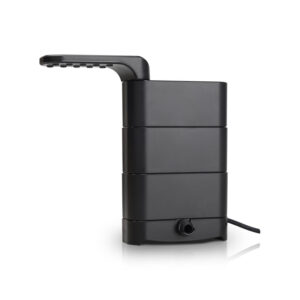
Great website
nice one